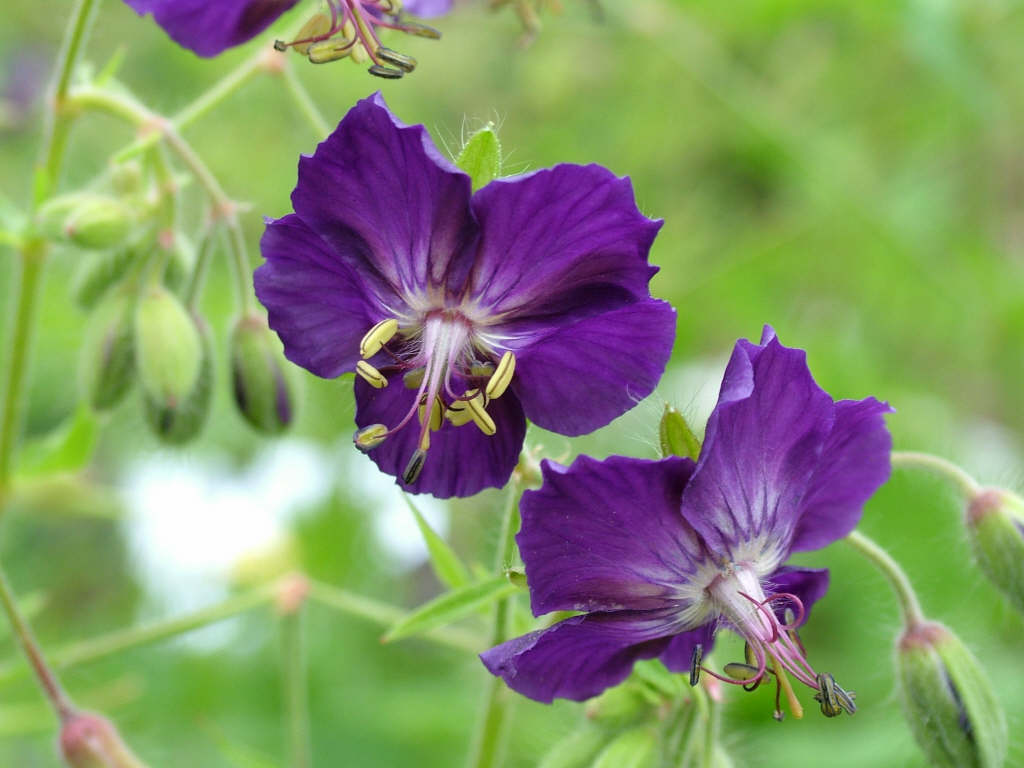Size
Ultimate height
0.5–1 metresTime to ultimate height
2–5 yearsUltimate spread
0.1–0.5 metresGrowing conditions
Moisture
Moist but well–drained, Well–drainedpH
Acid, Alkaline, NeutralColour & scent
| Stem | Flower | Foliage | Fruit | |
| Spring | Purple | Green | ||
|---|---|---|---|---|
| Summer | Purple | Green | ||
| Autumn | ||||
| Winter |
Position
- Full shade
- Full sun
- Partial shade
Aspect
East–facing or South–facing or North–facing or West–facing
Exposure
Exposed or Sheltered Hardiness
H7Botanical details
- Family
- Geraniaceae
- Native to GB / Ireland
- No
- Foliage
- Deciduous
- Habit
- Bushy
- Genus
Geranium can be annuals, biennials and perennials, herbaceous or evergreen, with rounded, usually palmately lobed or divided leaves, and lax inflorescences of rounded, 5-petalled flowers
- Name status
Accepted
How to grow
Cultivation
Grow in moderately fertile well-drained soil in full sun, partial shade or deep shade. Most soils (unless waterlogged) in either sun or shade are tolerated
Propagation
Propagate by division between early autumn and early spring or cut back plants after flowering in summer then divide. replant and water well
Suggested planting locations and garden types
- Cottage and informal garden
- Wildlife gardens
- Flower borders and beds
- Underplanting of roses and shrubs
Pruning
Remove flowered stems and old leaves to encourage the production of fresh leaves and flowers
Pests
May be damaged by vine weevil larvae, geranium sawfly larvae, capsid bug or slugs and snails
Diseases
May be susceptible to downy mildews, a virus and powdery mildews
Get involved
The Royal Horticultural Society is the UK’s leading gardening charity. We aim to enrich everyone’s life through plants, and make the UK a greener and more beautiful place.
